The start-up life is all about innovating, releasing products to market quickly, and then iterating based upon customer feedback. In event-tech, things are a little more complicated because our industry is very much ‘live’ – if the technology doesn’t just work, it rarely gets a second chance. No wonder PowerPoint has stayed Number 1 for so long.
Combine that with the fact that on-site event-tech tends to be mobile first (since that’s how you reach your audience) and that means hundreds of phone and browser combinations, and it is clear that innovation in the event space requires a slightly more ‘considered’ approach to new releases.
But that doesn’t mean moving slowly… quite the opposite.
Evolution and Revolution
Since we launched Glisser nearly two years ago, we’ve made hundreds of small improvements. Better event management functionality for large events, a simpler audience interface, more powerful moderator tools, enhanced security options and infrastructure adjustments to cater for more and more clients.
At the same time, we made one very big decision – to switch off our native apps and focus on our web application. Quite simply, audiences didn’t want the hassle of downloading apps.
This was a big lesson to learn three months after launch, but an important one. This drive for simplicity of experience is what has guided us ever since.
Taming the Elephant
As we balanced simplification with a long list of clever features suggested by our customers, who we use to co-create and prioritise our technology roadmap, there remained an elephant in the room. And that elephant is one of the biggest of them all – Microsoft PowerPoint.
Glisser had always been developed as a complement, rather than alternative to PowerPoint. Twelve years of experience at corporates, where the pace of change can be glacial, suggested this was necessary. Two years of sitting with AV engineers at the back of darkened rooms absolutely confirmed this.
If you took a sample of 1,000 presenters, 50 would be using Keynote and happy to convert the files to PowerPoint, 49 would be using Keynote and insist it was presented off their Mac, 1 would be using Prezi, and 900 would be using PowerPoint.
Building a Glisser add-in for PowerPoint was a major improvement for 90-95% of our users, since it makes the actual act of presenting as familiar as possible.
And joining the Microsoft Accelerator gave us that opportunity.
PowerPoint & Glisser: Familiar but Fantastic
We’ve consolidated audience clickers, polls, Twitter walls, questions and feedback into the one piece of event-technology that’s been around for 30 years – PowerPoint. We wanted the familiarity of Microsoft’s dominant (and frankly very flexible) software, combined with some fantastic features that make presentations better.
What does that mean?
- Familiar: Create your slides in PowerPoint as normal
- Fantastic: Share slides to audience devices in real-time
- Familiar: All animations, transitions, videos work as normal
- Fantastic: Add polls, Q&A, Twitter feeds & lead capture
- Familiar: Add things from the PowerPoint menu as normal
- Fantastic: Powerful analytics at the click of a button
- Familiar: Present slides from PowerPoint as normal
- Fantastic: Simple quick-keys to display interactions
It all sounds very simple and obvious. In fact, one the questions I get asked the most is “why hasn’t somebody else done it?” And my response relates to the very start of this blog post – it’s not easy to make things work effortlessly in a live, mobile-first, any-device, multiple-browser, variable Wi-Fi environment. It’s not just about software, it’s about understanding the way the events industry really works, and the challenges presenters face.
The more familiar we can make the technology, the less of a leap in the dark for event planners using audience interaction technology for the first time. The more we can integrate with established software, the easier the transition for presenters and the audio-visual teams supporting them behind the scenes.
Event-tech designed by the events industry
So that’s how we’ve got here today. A few mistakes (the native apps), loads of successes (particularly the army of presenters, event managers and AV engineers using Glisser day-in day-out), and a relentless pursuit of making presentations and audience participation better, but doing so without adding layers of complication.
